The Psychology of Persuasion in Digital Marketing: Understanding Consumer Behavior
Today digital marketing relies heavily on the art of persuasion. For instance, have you ever wondered why you impulsively bought that extra chocolate bar at the grocery store checkout? Even though you had it on your “not today” list?
Well, you’re not alone!
In the world of digital marketing, our decisions are subtly nudged by the fascinating dance between psychology and persuasion.
Today a whopping 93% of online shoppers admit to making impulse purchases.
So what is persuasion in digital marketing exactly? In digital marketing, persuasion means planning how a website looks so that it guides consumers to perform specific actions. Instead of leaving users to their own means, this strategy directs them toward the results that are desired. To do this effectively, things like layout, copy, typography, and promotional themes are used.
In this blog, we’ll unravel the mystery behind the Psychology of Persuasion in Digital Marketing.
We will expose the intricate ways in which our brains respond to online stimuli.
Let’s get started.
1. The Basics of Consumer Psychology
1.1. Definition and Importance:
Consumer psychology is like the backstage pass to understanding why we, as consumers, do what we do. In simpler terms, it’s the study of why you decide to buy something.
It can be a new phone, subscribing to a streaming service, or filling your virtual cart with things you may or may not need.
In the world of digital marketing, consumer psychology shines as the spotlight, revealing the intricate dance between buyers and sellers.
So, why does it matter? Well, imagine being a digital marketer without a clue about what makes consumers tick.
It’s like trying to play hide-and-seek in the dark! Understanding consumer psychology helps marketers navigate the twists and turns of our decision-making processes.
It’s the key to creating messages, ads, and online experiences that resonate with us, prompting a click, a purchase, or a loyal customer.
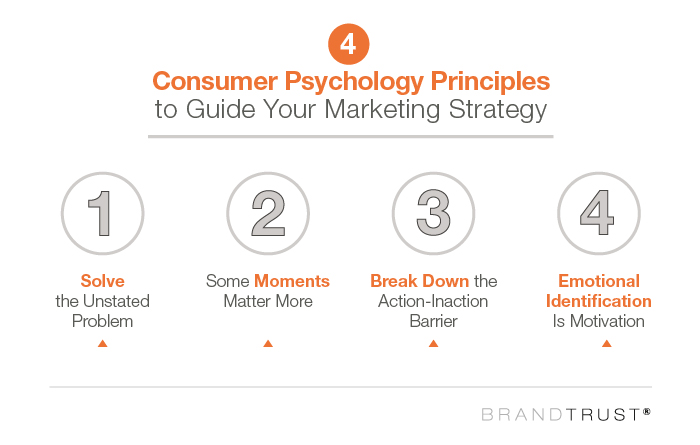
1.2. Motivation:
Now, let’s peel back the curtain and take a peek at what fuels our shopping sprees and digital adventures: motivation. Our motivations are like a treasure chest filled with needs, desires, and emotions.
Picture this: Your need for a new pair of shoes and the emotional satisfaction of treating yourself – all bundled together in that cart.
Digital marketers are the modern-day treasure hunters, strategically placing these treasures in our online paths to spark our interest and curiosity.
In digital marketing, understanding these motivations is the secret sauce.
Whether it’s appealing to our basic needs, encouraging your desire, or tugging at our heartstrings with emotions, marketers strategically tap into these motivational reservoirs to craft messages that resonate and, ultimately, drive us to click that “Add to Cart” button.
So, the next time you find yourself pondering over a purchase, remember – it’s not just a transaction. It’s a dance of motivations choreographed by the wizards of consumer psychology.
2. Principles of Persuasion
2.1. Reciprocity:
Reciprocity is like the golden rule of the digital marketplace – treat others as you’d like to be treated, and you might just get a virtual high-five in return.
In consumer psychology, reciprocity plays the role of the friendly neighbor who shares a cup of sugar.
When businesses give us something valuable, be it a discount, a freebie, or even valuable information, we feel a little nudge of gratitude.
It’s like receiving a thoughtful gesture from a friend.
Here’s the magic part: when we feel grateful, we’re more likely to respond positively.
Digital marketers use this principle by offering goodies, exclusive deals, or helpful content.
By creating a sense of reciprocity, they open the door to a positive relationship.
So, the next time you find yourself enjoying a free trial or snagging a discount code, remember – it’s not just a gift; it’s a strategic reciprocity, turning you into a happy collaborator.
2.2. Social Proof:
Ever hesitated before trying a new restaurant until you saw the bustling crowd inside? That’s social proof in action – the invisible force that whispers, “If everyone’s doing it, it must be good.”
In the digital realm, social proof is showing potential customers that others have tried a product or service and loved it. Here’s what Marketing360 has to say about social proof in digital marketing.
No wonder, digital marketers use social proof across their platforms to gain your trust.
It can be in the form of customer reviews, ratings, or even showcasing the sheer number of satisfied customers.
When we see others applauding a brand, we instinctively want to join the applause. Social proof builds trust and reassures us that we’re making a good decision.
So, the next time you see a string of five-star reviews, remember – it’s not just a rating; it’s the powerful echo of social proof persuading you to take the plunge.
2.3. Scarcity:
Imagine wandering through a magical marketplace where items are tagged “limited edition” or “last in stock.” Welcome to the world of scarcity, where the less there is, the more we want it.
Scarcity taps into our fear of missing out (FOMO) and triggers a psychological urgency to grab the opportunity before it vanishes.
In the digital marketing universe, savvy marketers use scarcity to their advantage. Limited-time offers, exclusive releases or countdown timers create a sense of scarcity, making a product or deal appear more valuable.
It’s like telling us, “Hurry, or you might miss out on something amazing!”
So, the next time you see a ticking clock or an “only a few left” message, remember – it’s not just a timer; it’s scarcity whispering, “Act now before it’s gone.”
2.4. Authority:
Picture this: you’re more likely to trust advice on space travel from an astronaut than from your neighbor’s cat.
That’s the authority principle at play – the idea that we tend to trust and follow those with expertise or credibility in a field.
In the digital marketing galaxy, establishing authority is like planting a flag on the moon. Marketers showcase expertise through industry awards, certifications, or collaborations with well-known figures.
When we perceive a brand as an authority, we’re more inclined to trust their recommendations and make a purchase.
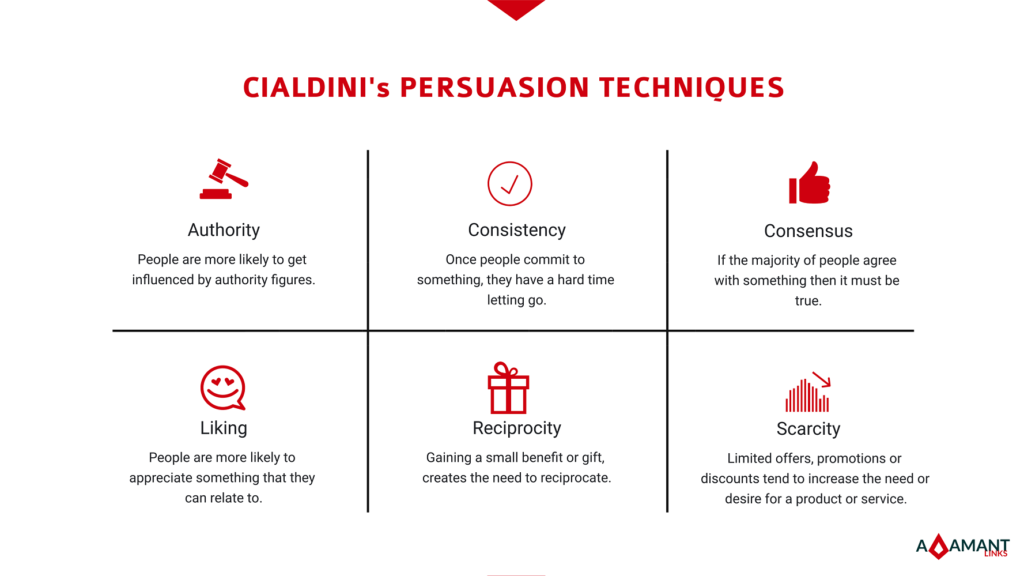
So, the next time you find yourself swayed by a brand’s expertise, remember – it’s not just knowledge; it’s the authority, influencing your brain.
3. Cognitive Biases in Consumer Decision-Making
3.1. Confirmation Bias:
Ah, confirmation bias – the friendly companion that makes us see what we want to see.
In the digital landscape, this bias plays a significant role in how we interpret information and make decisions.
Picture it like wearing glasses that tint everything in shades of our pre-existing beliefs.
When we’re exposed to information that aligns with what we already think or believe, we tend to give it a warm welcome.
This bias affects our online choices, from the news articles we click on to the products we choose to buy.
Digital marketers are well aware of this inclination, tailoring content to reinforce rather than challenge our existing views.
So, the next time you find yourself nodding along to an article that perfectly aligns with your opinions.
Remember – it’s not just coincidence; it’s the confirmation bias, guiding your digital journey.
3.2. Anchoring:
Imagine trying to estimate the value of a product without any reference point. It’s a bit like sailing without a compass.
Enter anchoring – the cognitive bias that sways our decisions by providing an initial reference point, an anchor, for comparison.
In the digital marketplace, anchoring is like setting the starting bid in an auction.
The first number we see becomes the anchor, influencing how we perceive subsequent prices.
Whether it’s the original price of a product before a discount or the starting point of a subscription plan, that initial anchor has a sneaky way of shaping our expectations.
Digital marketers strategically use anchoring to make their offerings seem more appealing.
So, the next time you’re drawn to a product because it’s “50% off,” remember – it’s not just a discount; it’s the strategic tug of anchoring, steering your perception of value.
4. Applying Psychology to Digital Marketing Strategies
41. Personalization:
Welcome to the age of digital tailoring – where marketing messages are custom-fitted to suit you perfectly.
Personalization in digital marketing is like having your own virtual shopper who understands your preferences, likes, and dislikes.
It’s not just a convenience; it’s a psychological hug that makes us feel seen and understood.
Imagine receiving emails addressing you by name or seeing product recommendations tailored to your past choices – that’s the magic of personalization.
Digital marketers use data to understand individual preferences, creating a more intimate and engaging experience.
When messages resonate with our unique tastes, we’re more likely to pay attention and make a purchase.
So, the next time you feel like a brand just “gets” you, remember – it’s not just chance; it’s the digital art of personalization, making your online journey uniquely yours.
Read More Easy Ways To Connect With Your Audience Using Email Marketing
4.2. Emotional Branding:
Beyond the functional aspects of products, emotional branding taps into our feelings, creating a connection that goes beyond the transactional.
It’s not just about what a brand sells; it’s about how it makes us feel.
Think of your favorite brand. What emotions does it evoke?
Whether it’s joy, nostalgia, or a sense of belonging, these emotions are carefully crafted by digital marketers.
By telling compelling stories, using evocative imagery, or associating with meaningful causes, brands aim to create emotional bonds with consumers.
When we feel a connection, we’re not just buying a product; we’re investing in an emotional experience.
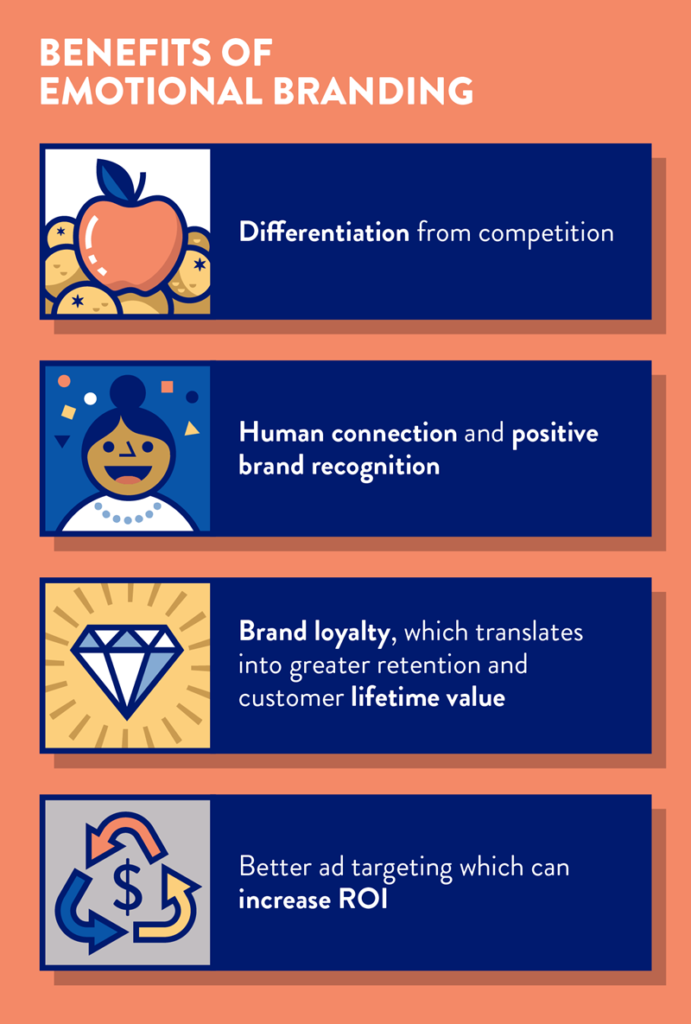
So, the next time you find yourself drawn to a brand for more than just its features, remember – it’s not just a product; it’s the emotional magic of branding, turning purchases into heartfelt connections.
Read More : Digital Marketing Secrets: And How To Succeed At Personal Branding
4.3. User Experience (UX) Design:
Ever visited a website that felt like a breeze to navigate?
That’s the handiwork of UX design – the unsung hero behind positive online experiences.
In the digital realm, where attention spans are shorter than a cat video, a user-friendly interface is like a welcome mat that invites us to explore.
UX design isn’t just about making things look pretty; it’s about creating an environment that guides us effortlessly.
From intuitive navigation to clear calls to action, every element is strategically placed to facilitate a positive and persuasive journey.
Digital marketers know that a seamless user experience is the key to keeping us engaged and, more importantly, converting clicks into actions.
So, the next time you find yourself breezing through a website, remember – it’s not just chance; it’s the artful implementation of UX design, making your online adventure enjoyable.
5. Real-world Examples:
5.1. Amazon’s Personalization Power:
Psychological Principle: Personalization
Amazon, the e-commerce giant, is a master of personalization.
Its recommendation engine analyzes your past purchases, searches, and even the products you hover over, creating a customized shopping experience.
By tailoring product suggestions, Amazon taps into the psychological principle of personalization, making users feel like the platform understands their preferences.
This strategy has significantly contributed to Amazon’s impressive conversion rates and customer loyalty.

5.2. Coca-Cola’s Share a Coke Campaign:
Psychological Principle: Reciprocity
Coca-Cola’s “Share a Coke” campaign was a global phenomenon that utilized the principle of reciprocity.
By replacing its iconic logo with popular names and terms of endearment, Coca-Cola encouraged customers to share a personalized Coke with friends and family.
This simple act of personalization triggered a sense of reciprocity – the feeling that by sharing, consumers were receiving a unique and thoughtful experience.
The campaign resulted in increased sales, social media engagement, and brand affinity.
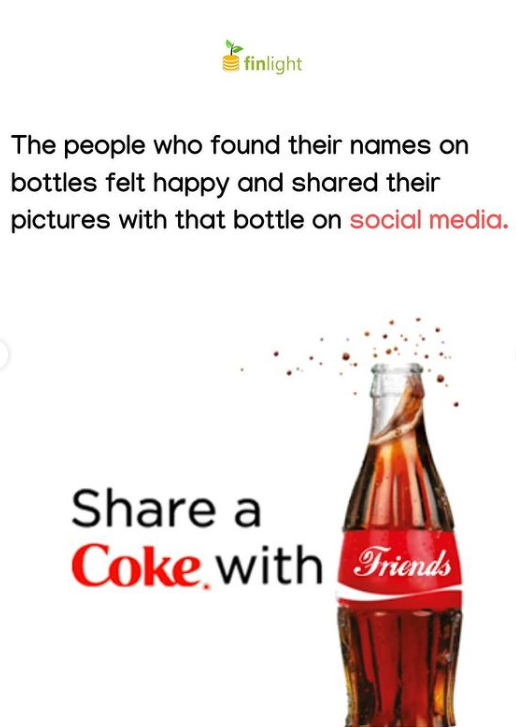
5.3. Apple’s Emotional Branding Mastery:
Psychological Principle: Emotional Branding
Apple is renowned for its emotional branding approach. The “Think Different” campaign, for instance, celebrated individuals who dared to challenge the status quo, fostering a sense of inspiration and creativity.
By associating the brand with powerful emotions and values, Apple has successfully created a loyal customer base that goes beyond mere product features.
The emotional connection encourages customers to stay committed to the brand, even as it evolves.
5.4. Airbnb’s Use of Social Proof:
Psychological Principle: Social Proof
Airbnb leverages social proof in its user reviews and ratings system.
Potential guests can see authentic reviews from previous visitors, creating a sense of trust and reliability.
By showcasing positive experiences, Airbnb taps into the psychological principle of social proof, influencing potential customers to choose listings with a history of positive feedback.

This strategy has been instrumental in establishing Airbnb as a trusted platform for travelers worldwide.
5.5. Fear of Missing Out (FOMO) in Booking.com:
Psychological Principle: Scarcity
Booking.com cleverly employs scarcity in its messaging by indicating the limited availability of hotel rooms.
The subtle urgency created by phrases like “Only 1 room left!” triggers the fear of missing out (FOMO) in potential customers.
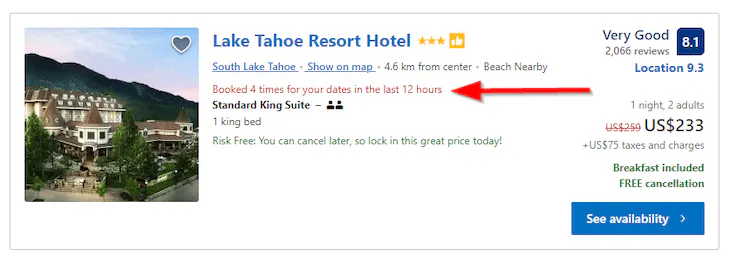
By suggesting that the opportunity is scarce, Booking.com encourages quicker decision-making and bookings.
This scarcity tactic has been effective in driving conversions and maximizing occupancy rates.
These case studies show how successful digital marketing campaigns strategically apply psychological principles to influence consumer behavior, whether through personalization, reciprocity, emotional branding, social proof, or scarcity.
Each example demonstrates the powerful impact of understanding and leveraging consumer psychology in the digital landscape.
FAQs
1. How effective is persuasion in digital marketing for enhancing business practices?
Persuasion in digital marketing is one of the most effective strategies for enhancing business operations.
For this strategy to work, businesses can carefully shape website design, content, and promotional messaging to influence consumer behavior toward desired actions.
This could be actions such as purchases or sign-ups.
This laser-focused approach not only increases conversion rates but also increases customer loyalty and engagement.
Not only that, persuasive digital marketing techniques can help businesses stand out in crowded markets, build brand trust, and experience long-term success.
2. For digital marketers, what exactly is social proof?
“Social proof” refers to the desire humans have to imitate the behavior and decisions of others. This is especially true if faced with unique or unfamiliar situations.
This could be regarding conduct or viewpoint. In the realm of digital marketing, it involves using proof or the opinions of others to influence the decisions of potential customers.
3. When it comes to buying purchases online, how do cognitive biases play a role?
When it comes to making purchases online, cognitive errors play a major role.
Confirmation bias and other forms of bias lead users to look for evidence that backs up their previous views, which in turn affects their decision-making.
Many times consumers are influenced by anchoring bias, which causes them to rely too heavily on the first piece of information they gain while making future decisions.
In addition, herd mentality and other forms of social proof take advantage of people’s biases and encourage them to act in ways that are consistent with what they already believe.
It is critical for digital marketers to understand these biases so they can create tactics that effectively attract and guide consumers.
4. How does smart UX design persuasion in digital marketing decisions?
Smart UX design plays a pivotal role in persuading consumers in digital marketing decisions.
- By optimizing website layouts, copy, and typography, UX design guides users toward specific actions, enhancing the overall user experience.
- Persuasive elements such as clear calls-to-action, intuitive navigation, and personalized recommendations influence consumer behavior.
- Another strategy is effective use of color psychology and visual hierarchy. This captures attention and reinforces brand messaging.
- Through thoughtful UX design, digital marketers can create seamless and compelling experiences that drive conversions and customer engagement.
5. How is FOMO crucial for influencing buyer behavior online ?
The fear of missing out (FOMO) depends on the assumption that great opportunities could slip by us.
- FOMO generates a false sense of scarcity and urgency, which influences consumer behavior.
- Online platforms tap into this fear to generate a sense of urgency.
- For this, they use time-sensitive offers and countdown timers, among other techniques.
- The created scarcity induces consumers to engage in impulsive buying behavior.
- This behavior is driven by the longing for participation in an activity. In the end, it increases purchases and engagement by capitalizing on individuals’ apprehensions regarding being left out.
Related Posts
Does Digital Marketing Really Work For Creating Wealth?
Best Ways to Improve Your Social Media Strategy
Data Privacy in Digital Marketing: Protecting Your Digital Privacy
2024 Digital Marketing Predictions: What to Expect in the Coming Year
Conclusion
As we conclude this exploration, it’s clear that the Psychology of Persuasion in Digital Marketing isn’t just a strategy; it’s a dynamic force that shapes the way we navigate and interact in the digital universe.
So, the next time you click “Buy Now,” remember, that behind that button lies a world of carefully crafted psychological tactics, turning a simple transaction into a captivating experience.
As consumers, we may be the players, but it’s the marketers who skillfully choreograph the dance, leaving an indelible mark on the ever-evolving stage of digital persuasion.

